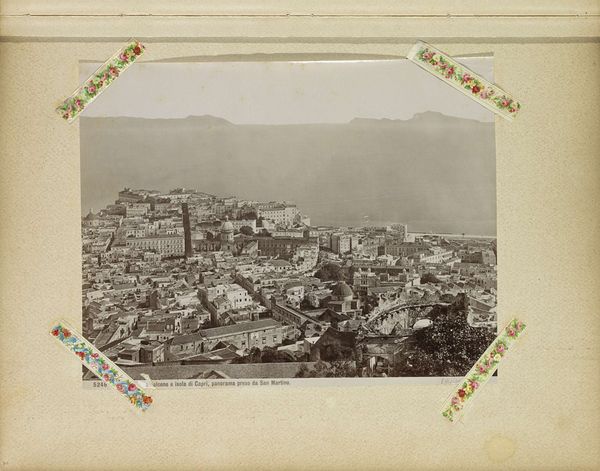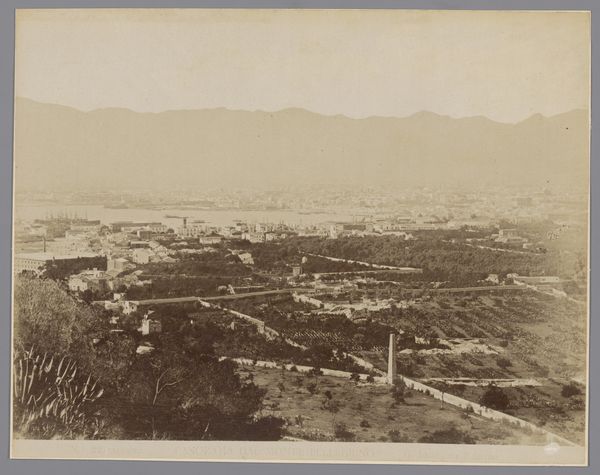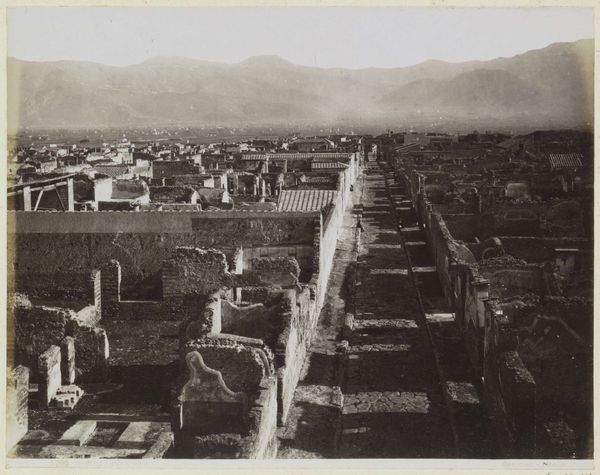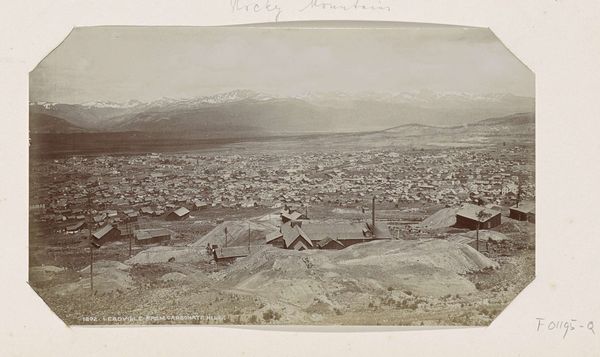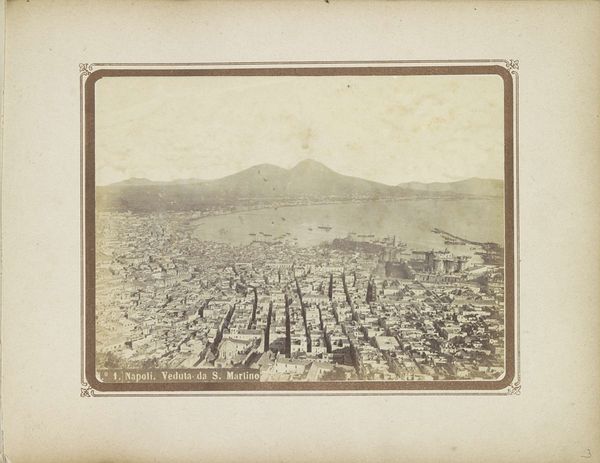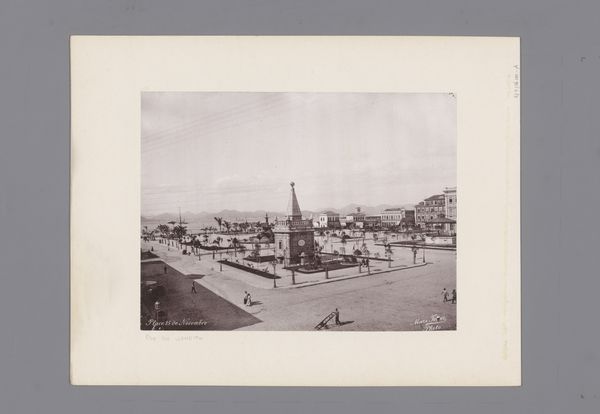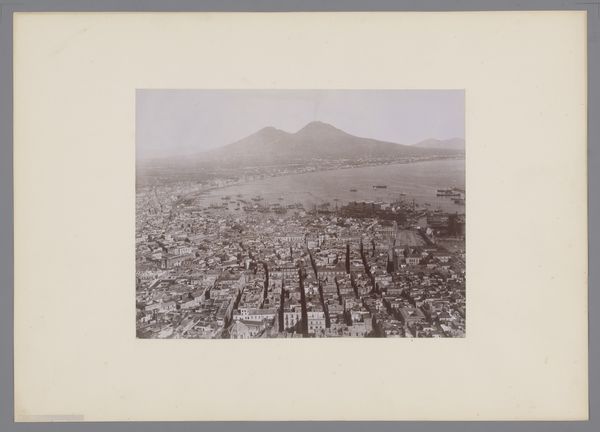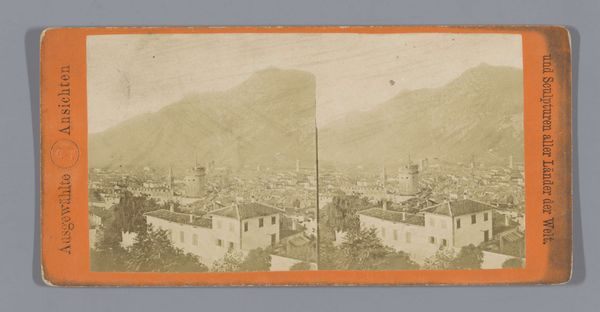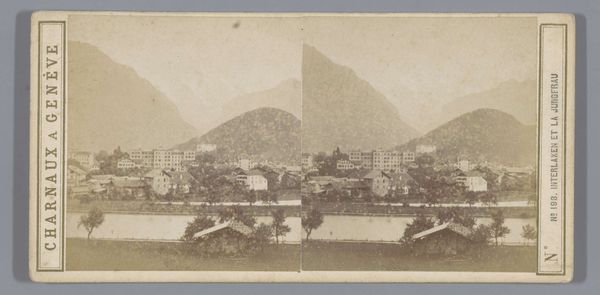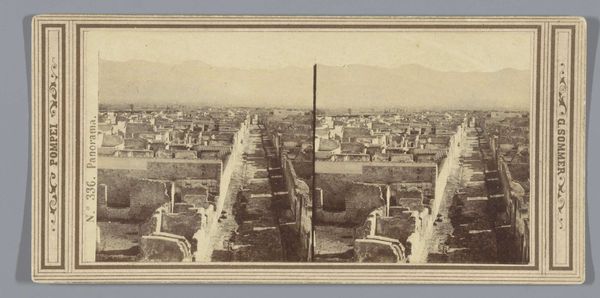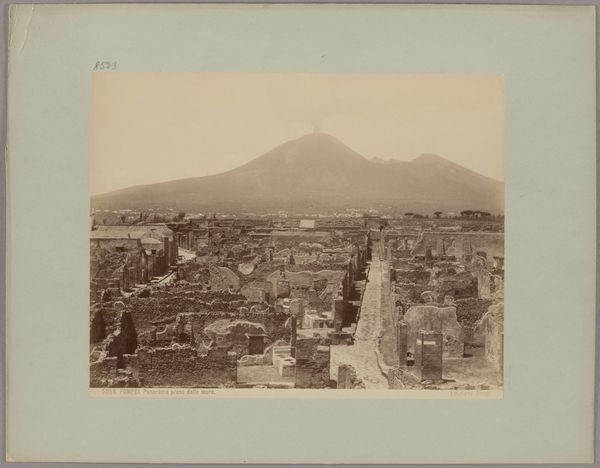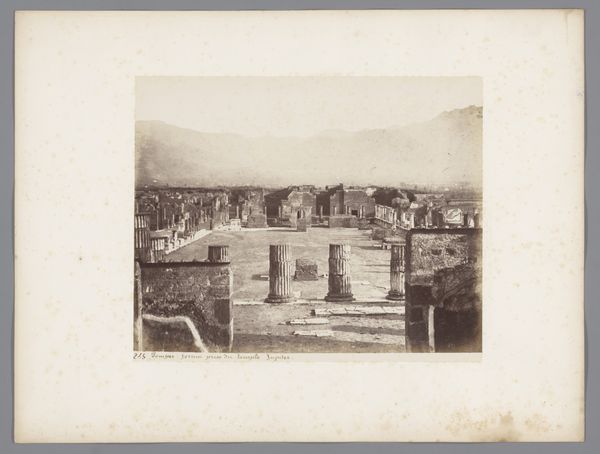
Gezicht op de restanten van Pompeï met op de achtergrond bergen c. 1860 - 1900
0:00
0:00
print, photography, gelatin-silver-print
#
print photography
# print
#
landscape
#
photography
#
ancient-mediterranean
#
mountain
#
gelatin-silver-print
#
cityscape
#
history-painting
#
realism
Dimensions: height 103 mm, width 140 mm
Copyright: Rijks Museum: Open Domain
Curator: This is a gelatin-silver print by Giorgio Sommer, created sometime between 1860 and 1900. The work is entitled "Gezicht op de restanten van Pompeï met op de achtergrond bergen," or "View of the Remains of Pompeii with Mountains in the Background." It's a sweeping cityscape, capturing the haunting beauty of the ruins. What strikes you most about this view? Editor: The silence. Even though there are buildings, and signs of life in the distance, there's an incredible stillness. The geometry of the remaining walls juxtaposed with the organic curve of the distant mountains almost makes it feel staged, like a theatre set after the final curtain. Curator: Yes, that stillness is palpable, isn't it? Photography, especially in the 19th century, has this incredible power to arrest time. Consider Pompeii itself; it was stopped in time by Vesuvius' eruption in 79 AD. This photograph captures a later moment, but it evokes a similar sense of frozen history. Editor: Exactly! The ruins become a symbol of the transient nature of human achievement. It makes you wonder about all the little lives lived here, the daily routines… Now it's all just whispers and shadows. The shadow of Vesuvius hangs over the image still. Curator: Indeed. It’s hard not to see Vesuvius looming in the background as a potent symbol. The photographer has carefully framed the shot to create this lasting impression of this shadow. Giorgio Sommer captured many images of Southern Italy. Through these, we can witness 19th-century ideas about ruins. Ruins had become picturesque; souvenirs from antiquity that confirmed contemporary narratives of European history. Editor: Do you think Sommer intended to invoke that sense of faded grandeur, or was he simply documenting what was in front of him? Perhaps there's no simple intention. I always find that landscape photography becomes automatically allegorical; there’s an implied comment, no matter how small, of nature’s dominion. Curator: A telling question. There is often more than one truth coexisting. What this photograph says about ruins, tourism, and history is also affected by our own position as viewers, today. These ruins once formed part of people's homes and were eventually rediscovered in the modern era. Perhaps this image reflects how human intervention and perception consistently create "new" readings of the past. Editor: So beautifully said. It gives you so much to think about. What do we carry of the past into our present and future? Curator: Yes. Thank you for that evocative closing sentiment, It encapsulates much about this compelling image and indeed how we view the remains of human history.
Comments
No comments
Be the first to comment and join the conversation on the ultimate creative platform.
